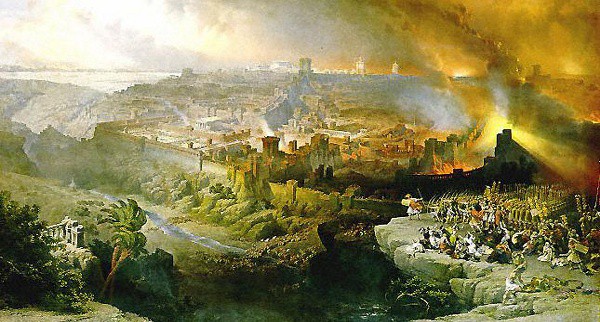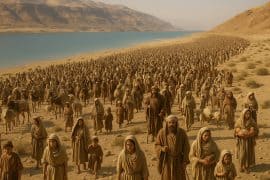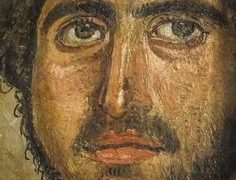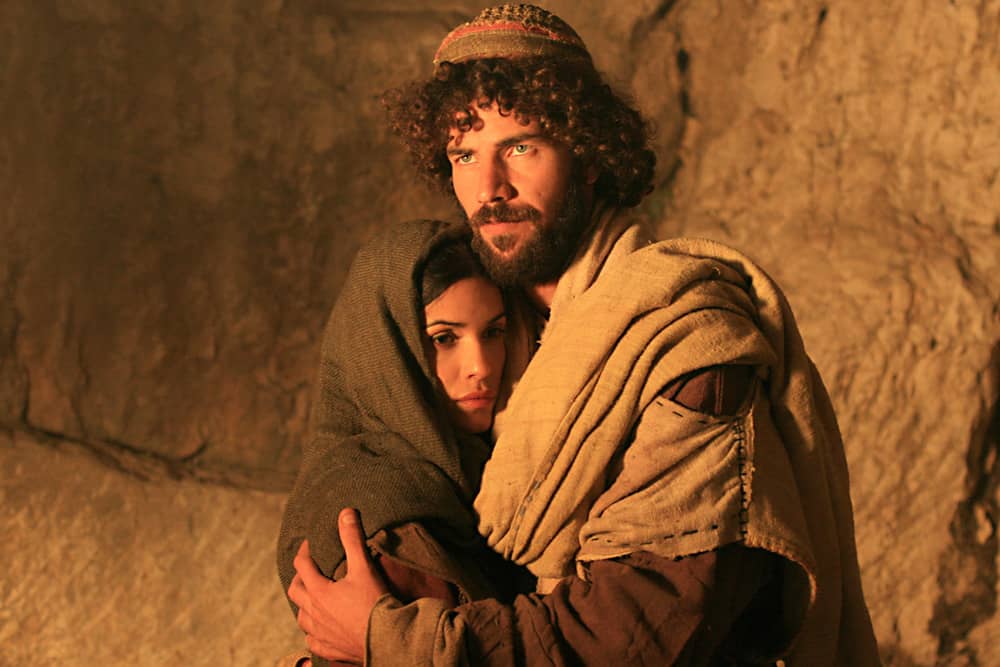[This post refers back to August 1st when I had been traveling out of the country for six weeks and could not post so easily. It is interesting that in our English tradition we refer to the “Dog Days of August” which corresponds to this time year on our calendars today]
As sunset falls on the eighth day of the 5th lunar month, known in Judaism as the month of Av, Tisha b’Av–that is, the 9th of Av–is marked on the calendar. The Sabbath that fell on July 29th, or the 6th of Av, began the Torah reading of Deuteronomy and is called Shabbat Chazon, which means the “Sabbath of Vision,” taken from the first word (חזון) of Isaiah 1:1-27, which is the reading from the Prophets for this day. These opening words of Isaiah set the tone for remembering Israel’s sinfulness that brought about the destruction of the holy city of Jerusalem.
Tisha b’Av is mentioned in Zechariah 7:3 and 8:19, as the “fast of the fifth month.” It is a 24 hour fast observed first and foremost to commemorate the destruction of both the 1st and 2nd Temples of Jerusalem, in 586 BCE and 70 CE respectively–first by the Babylonians, the subsequently by the Romans. Josephus, the Jewish historian, who records the history of the latter, and lived through it, makes the connection between the strange coincidence of the Temple going up in flames on the same fateful day on the Jewish calendar (Wars, 6:249–50). [1]The First Temple, built by King Solomon, was destroyed by the Babylonian king Nebuchadnezzar in 586 B.C.E. on the 10th of Av, according to Jeremiah 3:12, whereas in the corresponding record in II … Continue reading Those twin destructions marked the day as a time of sorrow and mourning forever after, marked by solemness and fasting without food or drink for 24 hours. The customs associated with Shiva, the Jewish mourning for the death of a close relative are followed, and the book of Lamentations is read in a special mournful chant. Ironically, according to some rabbinic tradition, the Messiah either was or will be born on Tisha b’Av, as a way of affirming that Light comes in the midst of the deepest Darkness and Despair. Those who take this literally, that he has already been born, believe he is hidden away waiting for the time of redemption (y. Berachot 2:4; Eichah Rabbah 1:51). Over the centuries this day has grown large in both history, legend, and tradition, remembered as a dark day of dire news and impending disaster. What follows below is a summary of some of that tradition, compiled by Yoram Etinger and based on many sources:

1. The 9th Day of (the 11th Jewish month) Av is the most calamitous day in Jewish history. Fasting on that day commemorates national catastrophes, in an attempt to benefit from history by learning from critical moral and strategic missteps, thus preventing future catastrophes. It was first mentioned in the book of Zechariah 7:3.
2. The Passover holiday of liberty and the fast of the 9th Day of Av are commemorated on the same weekday. The fast of the 9th day of Av is succeeded by the 15th day of Av – a holiday of love and rapprochement. The 9th Day of Av is treated simultaneously as a day of lamentation and holiday, thus highlighting a cardinal lesson: In order to fortify liberty and advance deliverance, one must commemorate calamities, avoid wishful-thinking and be mentally and physically prepared to face crises, and never lose optimism. A day of destruction/oblivion is the first day of the path toward construction/deliverance. A problem is an opportunity in disguise. According to the Jerusalem Talmud (Berachot 2:4), the Messiah is destined to be born on Tisha Be’Av.
3. Major Jewish calamities occurred on the 9th Day of Av (Tisha B’Av in Hebrew):
*The failed “Ten Spies/tribal presidents” (Joshua & Caleb) –slandered the Land of Israel, preferring immediate convenience and conventional “wisdom” over faith and long term vision, thus prolonging the wandering in the desert for 40 years.
*The destruction of the First Temple and Jerusalem by Nebuchadnezzar of Babylon (586BC) produced a massacre of 100,000 and a national exile.
*The destruction of the Second Temple and Jerusalem by Titus of Rome (70CE) was accompanied by a massacre of 1MN and a national exile.
*Bar Kochba (Great) Rebellion was crashed (135CE) with the fall of Beitar (in Judea & Samaria) and the plowing of Jerusalem by Quintus Tinius Rofus, the Roman Governor – 580,000 killed.
*First Crusade Pogroms (1096) – scores of thousands slaughtered.
*Jewish expulsion from Britain (1290).
*Jewish expulsion from Spain (1492).
*WW1 erupted (1914).
*The beginning of the 1942 deportation of Warsaw Ghetto Jews to Treblinka extermination camp.
4. The centrality of Jerusalem in Jewish history is commemorated on the 9th day of Av. It is highlighted by Psalm 137:5 – “If I forget thee, O Jerusalem, let my right hand forget her cunning. If I do not remember thee, let my tongue cleave to the roof of my mouth, if I prefer not Jerusalem above my chief joy.” According to the constructive/optimist spirit of Tisha’ Be’Av: “He who laments the destruction of Jerusalem will be privileged to witness its renewal” (Babylonian Talmud, Ta’anit 30).
5. The Book of the five Lamentations (The Scroll of Eikhah which was composed by Jeremiah the Prophet, who prophesized destruction, exile and deliverance) is read during the first nine days of Av. The numerical value of the Hebrew letters of Eikhah (איכה) is 36, which is equal to the traditional number of righteous Jewish persons. The Hebrew meaning of Eikhah could be construed as a reproaching “How Come?!”, as well as “Where are you?” or “Why have you strayed away?” The term Eikhah stars in the first chapter of Deuteronomy and the first chapter of Isaiah, which are annually studied in conjunction with the book of Lamentations on the 9th day of Av. Thus the 9th day of Av binds together the values of Moses, Jeremiah and Isaiah and three critical periods in the history of the Jewish People: deliverance, destruction, renewal.
6. The 9th Day of Av concludes a series of three Torah readings of Jewish calamities (two by Jeremiah and one by Isaiah), and launches a series of seven Torah readings of consolations, renewal and ingathering (by Isaiah).
7. Napoleon was walking at night in the streets of Paris, hearing sad voices emanating from a synagogue. When told that the wailing/lamenting commemorated a 586BC catastrophe – the destruction of the First Temple – he stated: “People who solemnize ancient history are destined for a glorious future!”
8. The commemoration of the 9th day of Av constitutes a critical feature of Judaism. It strengthens faith, roots, identity, moral clarity, cohesion and optimism by learning from past errors and immunizing oneself against the lethal disease of forgetfulness. Memory is Deliverance; forgetfulness is oblivion. The verb “to remember” (זכור) appears almost 200 times in the Bible, including the Ten Commandments. Judaism obligates parents to transfer tradition to the younger generation, thus enhancing realism and avoiding the curse of euphoric or fatalistic mood.
9. The custom of house-cleaning on the 9th day of Av aims at welcoming deliverance. Fasting expresses the recognition of one’s limitations and fallibility and the constant pursuit of moral enhancement and humility.
10. The 9th Day of Av is the central of the Four Jewish Days of Fast, commemorating the destruction of the First Temple: the10th Day of Tevet (the onset of the siege that Nebuchadnezzar laid to Jerusalem), the 17th day of Tamuz (the walls of Jerusalem were breached), the 9th day of Av (destruction of both Temples) and the 3rd day of Tishrey (The murder of Governor Gedalyah, who maintained a level of post-destruction Jewish autonomy, which led to a murder rampage by the Babylonians and to exile).
11. The 9thDay of Av culminates the Three Weeks of Predicament (ימי בין המצרים), starting on the 17th day of the month of Tamuz, when the walls of Jerusalem were breached by Nebuchadnezzar (1st Temple) and by Titus (2nd Temple).









Comments are closed.